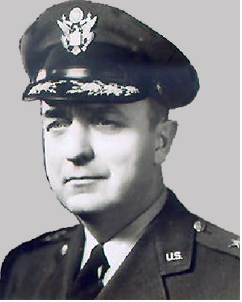Major General
Richard C. Coupland
 Major General Richard
C. Coupland was born in West Point, Virginia on December 14, 1893 and graduated from Virginia Military Institute
in 1915.
Major General Richard
C. Coupland was born in West Point, Virginia on December 14, 1893 and graduated from Virginia Military Institute
in 1915.
His long and distinguished service was significant to the development and supply of ordnance materiel for the Armed Forces. He participated in some of the early post-World War II experimental work of the Ordnance Department while stationed at the Springfield Armory, Springfield, Massachusetts. He had much to do with the progress of aircraft armament in the period between the First and Second World Wars.
He was personally responsible for originating a series of tests on all sizes of demolition bombs to determine their characteristics for low-altitude bombing. These tests, carried out under his guidance, resulted in the development and adoption of a bomb and fuzes which successfully met the requirement of low-altitude “skip bombing.” The results achieved in battle were considered phenomenal.
His technical support was largely responsible for the successful development of the initial high-rate-of-fire “Gatling Gun,” the forerunner to similar guns now employed throughout the Armed Forces.
During World War II, his office was instrumental in the research, development, and supply of many ordnance items such as machine guns, improved cannons, ammunition, bombs, and fuzes. He also holds patents covering radio control of dynamic bodies, aircraft gun synchronizers, feed mechanisms of aircraft weapons, computer gunsights, aerial mechanisms, and various types of ammunition.